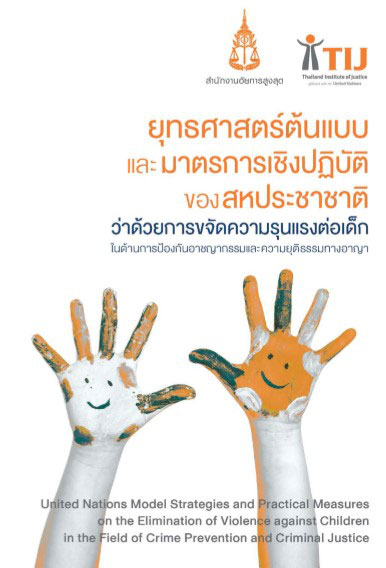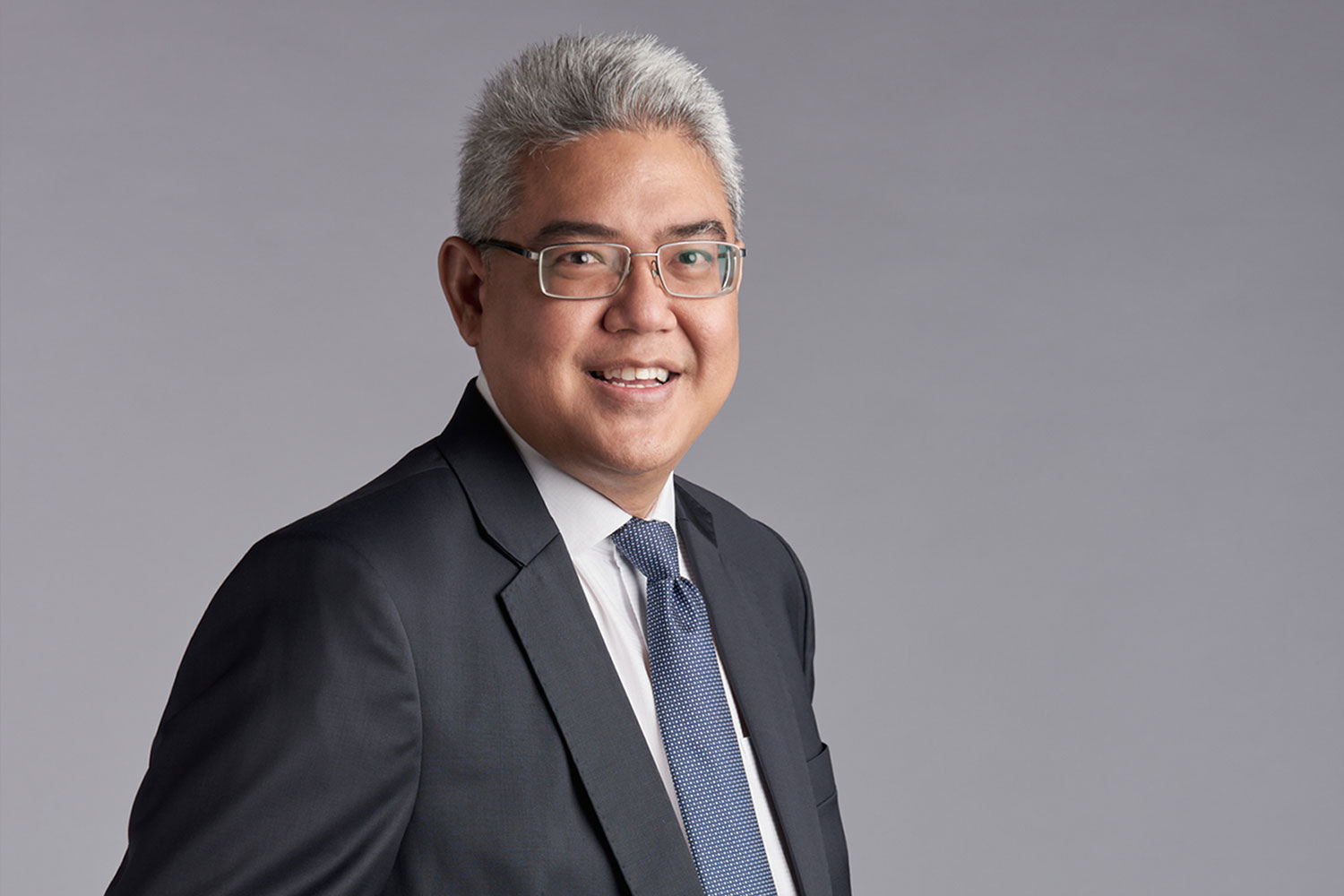
Aiming to revitalise child protection through social involvement and justice
Violence against Children is a widespread phenomenon affecting millions of children all over the world. Although considerable progress has been achieved in past decades in addressing the issue, much work remains to be done to shield children caught up in the justice system one way or another from violence, abuse and exploitation, as set out in Article 19 of the Convention on the Rights of the Child (CRC).

To elevate Thailand’s adoption of this global policy, the Thailand Institute of Justice (TIJ) has been collaborating with Nitivajra Institute, the Office of the Attorney General, to create an official translation of the United Nations Model Strategies and Practical Measures on the Elimination of Violence against Children in the Field of Crime Prevention and Criminal Justice (the UN Model Strategies on VAC). The hope is that localisation of the international policy will enable relevant organisations to devise plans in compliance with the Model Strategies, and so lead Thailand to greater development on the issue.

At the launch of the Thai version of the UN Model Strategies on VAC, held on 15 July 2021, Mr. Vongthep Arthakaivalvatee, Advisor of the TIJ and former Deputy Secretary-General of ASEAN for ASEAN Socio-Cultural Community, spoke of the importance of revisiting collective responsibility and community involvement concerning violence against children.
“By revitalising our involvement in protecting against and dealing with violence against children, we can improve immunity from charges of abuse and exploitation of children in many contexts and circumstances. Among other crucial aspects, violence against children when they come into contact with the justice system especially needs much improvement.”
“As international standards, the UN Model Strategies on VAC allows flexibility with implementation according to different national situations and backgrounds without binding adopting countries to legal obligations and penalties. This boosts the conditions for all sectors involved to see what is practical and make partial reforms accordingly,” he explained.

Ms. Santanee Disayabut, Director, Secretariat Office of Nitivajra Institute cast some light upon existing issues and explained how adopting the UN Model Strategies on VAC has proven to be for the better.
“While our country’s child protection procedures have been laid out, we can by no means deny that they still bear a certain risk of violence toward children, especially during investigation and trial processes. Instead of acting as a safeguard, they sometimes inflict more wounds on child victims. This means our mission of serving the best interest of the child has not yet come to fruition.”
“To eliminate the chances of children pursuing justice and remedy ending up being re-victimised along the way and unnecessarily opening their wounds,” Ms. Santanee asserted, “we have to start by adjusting our justice system to become more child-sensitive. And to do that, we must pay special attention to procedural gaps that carry a risk of violence.”

The ontology of recreating safer spaces for child protection and reducing disruptive violence occurring within the justice system was further expanded on by Dr. Suntariya Muanpawong, Secretary of the Court of Appeal, Region 1.
“Increasing local access to the UN Model Strategies on VAC will get some parts of the job done, but not all,” she said. “To improve the effectiveness of the criminal justice system in preventing and responding to violence against children, we need a more thorough inspection of its internal workings.”
“Rectifying flaws in the justice system may be a long and laborious task but would be of far greater value to society than just tolerating the flaws. We avoid looking into our judicial institutions such as the Central Juvenile and Family Court where we have not seen much internal assessment, despite it being among the world’s oldest. Above all, we must train our justice professionals to know how to make use of available information resources and technologies beneficial to procedures supporting children’s rights,” concluded Dr. Suntariya.

Meanwhile, interdisciplinary collaboration among relevant social and medical organisations, including local communities, have acted as a safety net for children’s vulnerability when coming into contact with the justice system, Ms. Vorapat Saengkaew, Head Nurse of Social Welfare Department, One Stop Crisis Center (OSCC) at Pathum thani Hospital explained.
“Quick procedures and ready medical assistance within the justice system are crucial. However, they may at times be oblivious to the needs of the children. We ask ourselves constantly, will the answer from the justice system really be final. We also ask what circumstances we are sending the victims back to? Controversial as it may sound, barrelling minors through all the justicial and remedial processes without removing them from their daily environmental or familial threats will, in most cases, only yield a temporary halt to violence.”
“Suffice to say, victims of violence who reach out for help have already witnessed violence of different kinds more than once, and they bear a higher risk of returning and becoming victims all over again. That’s why our concept of aimed-for justice focuses on the provision of mental support, safe spaces and guidance for a better future,” Ms. Vorapat added.
The discussions at the launch of Thailand’s UN Model Strategies on VAC project brought to the surface the need for the justice system to take internal management more seriously and see beyond the tip of the iceberg, so to speak. The discussions also highlighted the need to update procedures around policy-based advocacy to fulfil the mission and safeguard children’s rights in the justice process. Each improvement reduces the maltreatment that is so corrosive, and improves the chances of children snagged in the legal system being protected in a non-violent environment that safeguards their rights to survive, develop and be fully respected.
To read the full version of the UN Model Strategies on Violence against Children (Th/En), click https://knowledge.tijthailand.org/en/publication/detail/un-model-strategies-on-vac#book. Suggestions and feedback are highly welcome @acedemy@tijthailand.org.